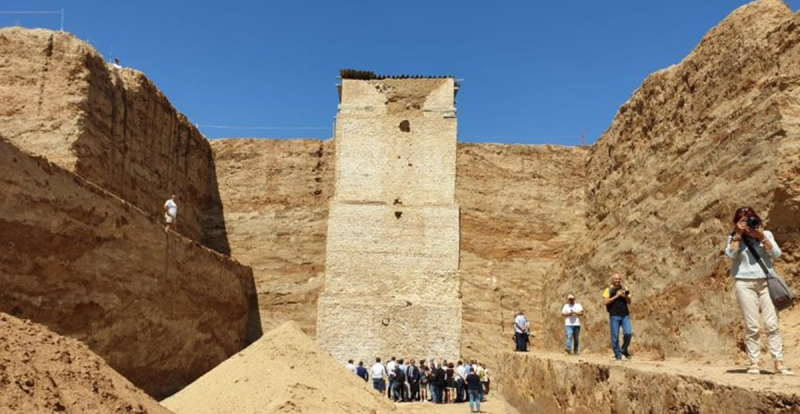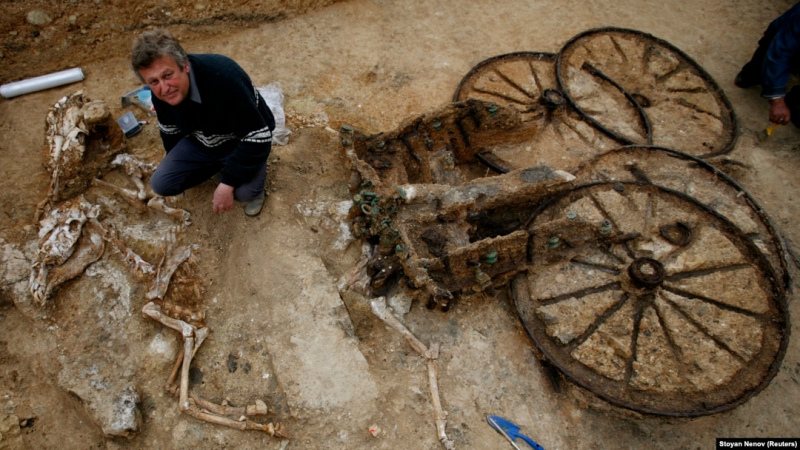The Eastern Mound
The Eastern Mound is an archaeological site in Bulgaria comprised of the beautifully preserved gravesite and chariot of an elite Thracian warrior. The Thracians were tribes who existed at the same time as the better known Greeks and Roman civilisations and were often in conflict with these cultures. Dating back to the 1st century AD, the Eastern Mound was only discovered in 2008. Now, visitors to this site can see the remains of this grave site in their original location, along with his horses and a dog.
The Thracian’s chariot is also on display, complete with an intact decoration. It is distinctive not only for having 4 intact wheels but for the larger-than-usual size of these wheels. The burial mound occupied around 24 hectares of land, and was originally also a prehistoric settlement, inhabited for around 3,000 years. Between 1936 and 1984, archaeologists excavated the site, finding an engraved round seal from the earliest period of writing. The seal was believed to be a sign of status given to public servants and used during religious ceremonies. The site also contained a basilica housing 16 tombs and fortifications.
In 2008, excavations began on ‘The Eastern Tomb’. The large form running north to south measured in total 77 meters in diameter, and inside, archaeologists found a vaulted brick tomb. Whoever was buried there was very wealthy, as they were buried along with 2 silver chalices were found inscribed with images of the god Eros, as well as glass plates, coins, silver anklets. Today, visitors to the Eastern Mound can view the original Thracian chariot where it was found, ‘pulled’ by the eerie skeletal forms of 2 horses, and an exact replica of the bronze trim, found scattered across the site.












